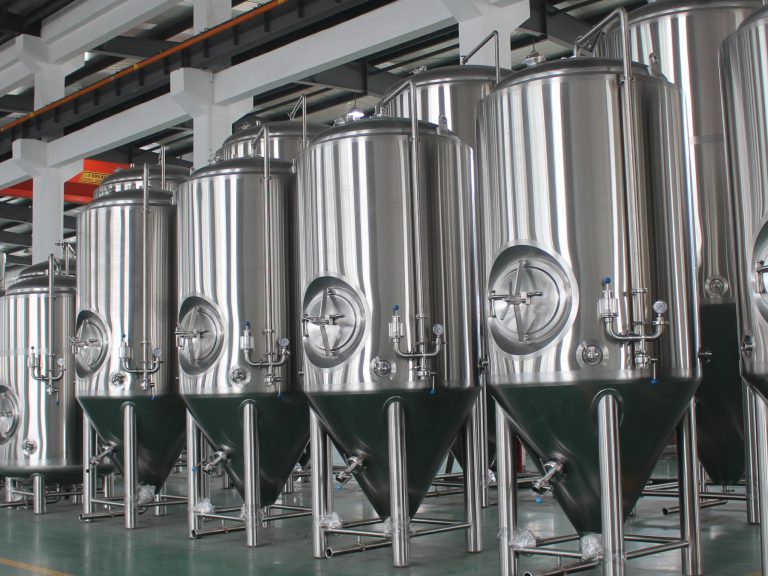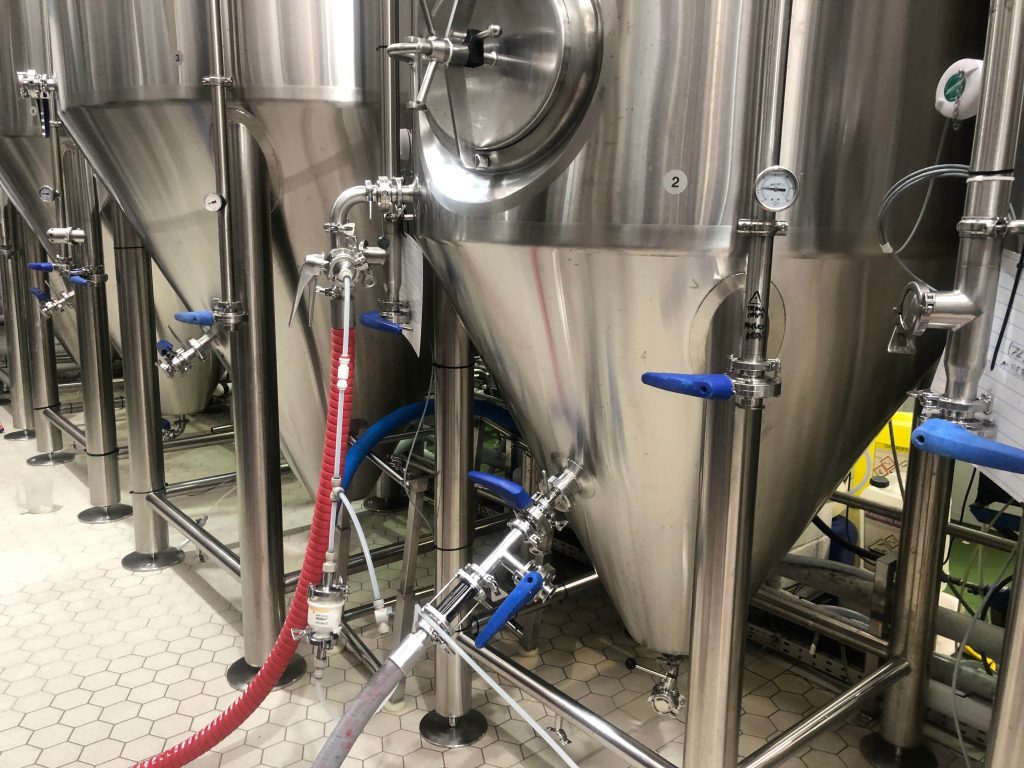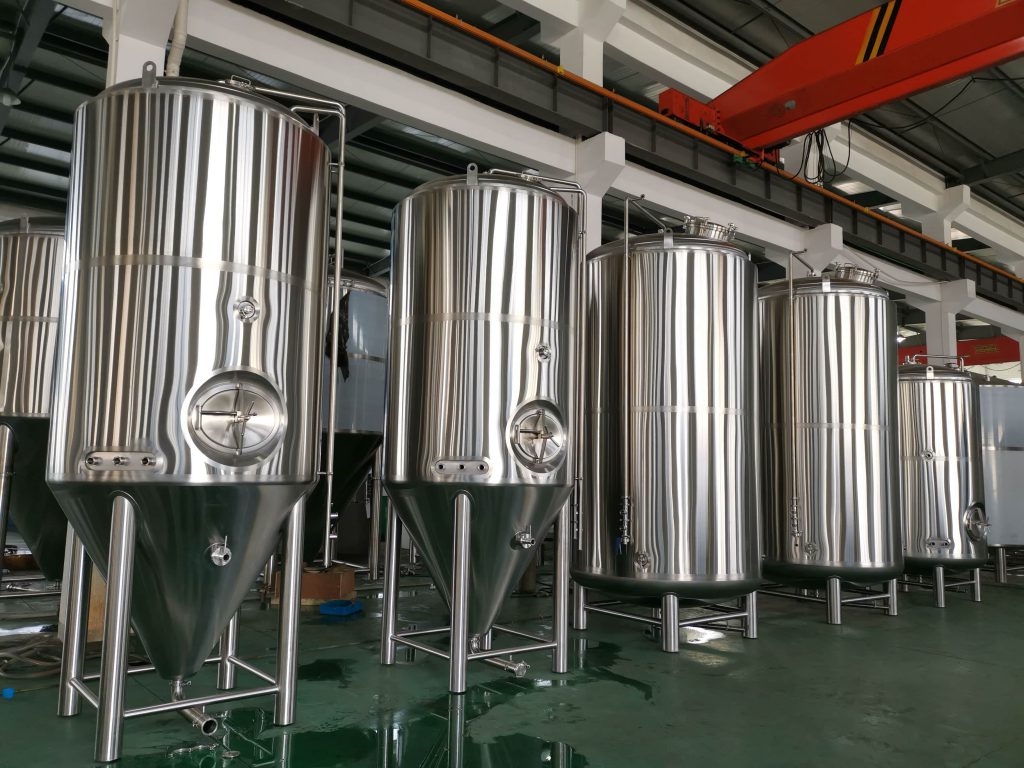مقدمة

يعد اختيار أفضل وعاء للتخمير قرارًا بالغ الأهمية لتحقيق نتائج مثالية في عمليات التخمير والتخمير في المنزل. سواء كنت تقوم بتخمير البيرة أو النبيذ أو الكومبوتشا أو غيرها من الأطعمة المخمرة، فإن الوعاء الذي تختاره يؤثر بشكل عميق على جودة ونكهة منتجك النهائي. يستكشف هذا الدليل الشامل أنواعًا مختلفة من أوعية التخمير والعوامل الرئيسية التي يجب مراعاتها عند اختيارك، ويوفر مقارنة مفصلة لمساعدتك على اتخاذ قرار مستنير.
انواع من أوعية التخمير
Plastic Fermenters: Affordable and Practical
Plastic fermenters are popular among homebrewers and fermenters for their affordability, practicality, and ease of use. Made from food-grade plastic, these vessels are lightweight and resistant to most chemicals. However, they can scratch easily, potentially harboring bacteria if not cleaned thoroughly after each use. Despite this drawback, many beginners and seasoned brewers alike appreciate plastic fermenters for their cost-effectiveness and versatility in handling various fermentation needs.
Glass Carboys: Transparency and Purity
Glass carboys are favored for their inert nature, which ensures no flavor transfer or chemical interaction with the fermenting liquid. They provide a clear view of the fermentation process, allowing brewers to monitor clarity and progression. Available in various sizes, glass carboys are suitable for those who prioritize visual observation and maintaining the purity of their brews. However, they are heavy and fragile, requiring careful handling to prevent breakage, which may deter some brewers despite their aesthetic appeal.
Stainless Steel Fermenters: Durability and Precision
Stainless steel fermenters are renowned for their durability, ease of cleaning, and non-reactive properties. They do not scratch easily and are resistant to staining and odors, making them ideal for long-term use and repeated fermentations. These vessels often feature built-in temperature control options or compatibility with external temperature regulation devices, allowing brewers precise control over fermentation conditions. Although stainless steel fermenters come at a higher initial cost, their longevity and performance make them a preferred choice for serious brewers seeking consistency and quality in their brews.
Fermentation Buckets: Practicality and Affordability
Fermentation buckets, typically made from food-grade plastic, offer a straightforward and budget-friendly solution for homebrewers and fermenters. They come equipped with airtight lids and are available in various sizes to accommodate different batch volumes. Easy to clean and sanitize, fermentation buckets are lightweight and easy to handle, making them ideal for beginners or those fermenting larger quantities. While lacking the transparency of glass carboys, fermentation buckets are a practical choice for many enthusiasts looking for simplicity and functionality.
عوامل في الاعتبار
Size: Matching Batch Needs
Choosing the right size fermentation vessel depends on batch size, available space, and fermentation volume. Larger vessels are suitable for primary fermentation, allowing ample room for foaming and bubbling during the active fermentation stage. Smaller vessels may be used for secondary fermentation or experimental batches where precise control over smaller volumes is desired.
Airlock Compatibility: Ensuring Proper Ventilation
Ensuring compatibility with an airlock is crucial to allow carbon dioxide produced during fermentation to escape while preventing contaminants from entering the vessel. Most fermentation vessels, including plastic fermenters, glass carboys, stainless steel fermenters, and fermentation buckets, are designed with provisions for attaching airlocks or blow-off tubes, ensuring optimal fermentation conditions and minimizing the risk of off-flavors or contamination.
Temperature Control: Maintaining Optimal Conditions
Maintaining consistent fermentation temperatures is essential for achieving desired flavors and aromas in fermented beverages or foods. Some fermentation vessels, particularly stainless steel fermenters, offer built-in temperature control features or are designed to accommodate external temperature control devices such as immersion heaters, cooling jackets, or fermentation chambers. Consider your climate and brewing preferences when selecting a fermentation vessel to ensure it can adequately support your desired fermentation temperature range.
Comparison Table: Features of Popular أوعية التخمير
| ميزة | Plastic Fermenter | قارورة زجاجية | مخمر من الفولاذ المقاوم للصدأ | دلو التخمير |
|---|---|---|---|---|
| مادة | بلاستيك صالح للطعام | زجاج | الفولاذ المقاوم للصدأ | بلاستيك صالح للطعام |
| متانة | Prone to scratching, moderate durability | Fragile, high durability | Very durable, resistant to scratching | Durable, minimal scratching |
| الشفافية | غير شفاف | شفاف | غير شفاف | غير شفاف |
| وزن | خفيف الوزن | ثقيل | ثقيل | خفيف الوزن |
| يكلف | قليل | واسطة | عالي | قليل |
| صيانة | Easy, requires thorough cleaning | Requires careful handling, regular cleaning | Easy, minimal maintenance required | Easy, regular cleaning |
| Airlock Compatibility | نعم | نعم | نعم | نعم |
الصيانة والتنظيف

Proper maintenance and cleaning of your fermentation vessel are essential to prevent contamination and ensure the longevity of your equipment. Regardless of the material, thorough cleaning with non-abrasive cleaners and sanitization with food-grade sanitizers or diluted bleach solutions are recommended after each use. Follow manufacturer recommendations for specific cleaning procedures to maintain the integrity and cleanliness of your chosen fermentation vessel.
خاتمة
Choosing the أفضل وعاء للتخمير involves considering various factors such as material preferences, size requirements, and budget constraints. Each type of fermentation vessel offers distinct advantages and considerations, from the affordability and ease of plastic fermenters to the durability and precision of stainless steel fermenters. By evaluating these factors against your brewing or fermenting goals, you can confidently select a fermentation vessel that aligns with your preferences and supports successful fermentation outcomes, ensuring consistent quality and flavorful results in every batch.
التعليمات
Q: What size وعاء التخمير هل يجب علي أن أختار؟
A: The size of your fermentation vessel should match your batch size and available storage space. Larger vessels are ideal for primary fermentation, while smaller vessels may be suitable for secondary fermentation or experimental batches.
Q: Are glass carboys safer than plastic fermenters?
A: Both glass carboys and plastic fermenters have their advantages and considerations. Glass carboys are inert and do not scratch, but they are heavier and more fragile. Plastic fermenters are lightweight and affordable but can scratch, potentially harboring bacteria if not cleaned thoroughly.
Q: How do I clean and sanitize a وعاء التخمير?
A: Clean your fermentation vessel with a non-abrasive sponge and mild detergent, ensuring all residues are removed. Sanitize thoroughly using a food-grade sanitizer or a diluted bleach solution, followed by rinsing with clean water before use.

